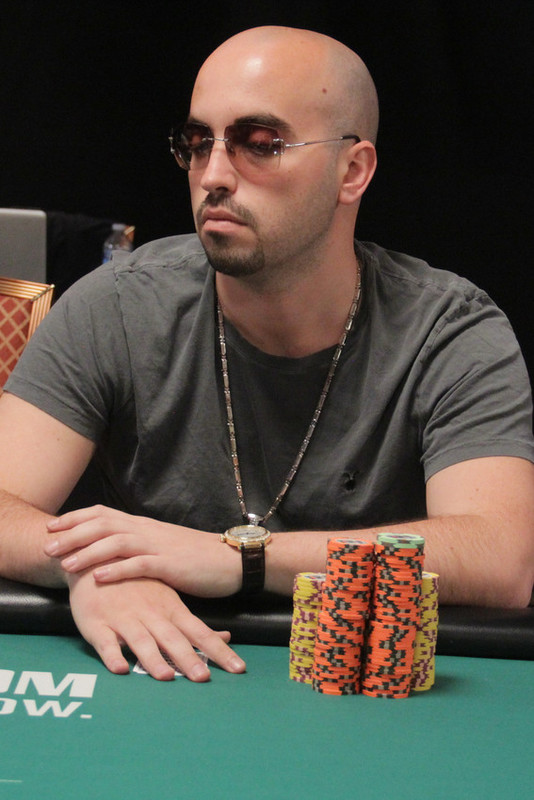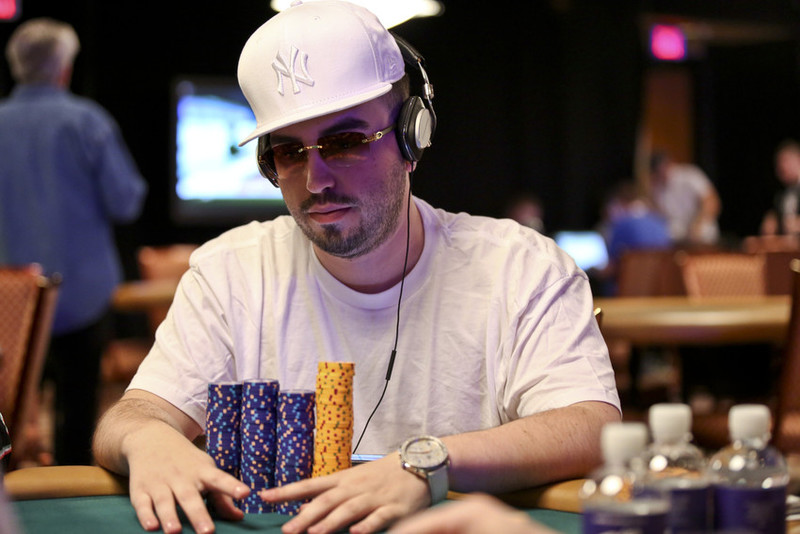






Bryn Kenney: Hunting For The No. 1 RankingKenney Explains Why He's Been Living Out Of A Suitcase Since Black Friday |
|
|

There are very few players who can match the volume put in by high-stakes grinder Bryn Kenney. A quick look at his tournament cash list proves that not only is the New York native consistent, but he also has no problem traveling all over the globe to stay in action.
In the past year alone, he’s not only made trips to the staples of the tournament circuit, such as Las Vegas, Atlantic City and Los Angeles, but also more exotic destinations such as Dublin, the Bahamas, Malta, Barcelona, Monte Carlo, Berlin, Macau, London and Melbourne. Simply put, even after a decade of playing poker, Kenney still loves the game.
And for good reason, too. Kenney has been paid handsomely for his efforts at the tables, racking up $8.5 million in career live tournament earnings. He won his first World Series of Poker bracelet back in 2014, taking down the $1,500 10-game mix event and nearly won a second last summer. Most recently, he won the $100,000 buy-in super high roller event at the PokerStars Caribbean Adventure for $1,687,800.
Card Player caught up with Kenney after he made back-to-back final tables in $25,000 high roller events at Aria to talk about his most recent victory, playing through downswings and his rigorous travel schedule.
 Julio Rodriguez: Before we talk about your latest win, let’s talk about your close call at the 2015 WSOP, where you took second in the $5,000 no-limit hold’em event for $287,870. How did it feel to come so close to a second career bracelet.
Julio Rodriguez: Before we talk about your latest win, let’s talk about your close call at the 2015 WSOP, where you took second in the $5,000 no-limit hold’em event for $287,870. How did it feel to come so close to a second career bracelet.
Bryn Kenney: I’d be lying if I said that one didn’t hurt. I was heads-up against the guy I wanted to be heads-up with at the final table. I had knocked out almost everybody else, some really good players. I had a 7 to 1 chip advantage. But it just didn’t happen for me. It was heart breaking, to be honest.
JR: Certainly the money was at least a nice consolation prize?
BK: I didn’t even win during the WSOP this summer. Yeah, that was a nice score, but when you consider the fact that I played in the Big One For One Drop event, staked some people and bought pieces of others, I didn’t make a profit. I probably lost somewhere between $100k and $200k, which was essentially the difference between first and second place in that tournament. But hey, that happens. Especially when you splash around as much as I do.
JR: How long does it take you to recover from a loss like that?
BK: I was down on myself for a few hours, but then I was ready to jump into the next tournament. If you play high-stakes poker for a living, then you’d be smart to remember that it’s just a game. When I play, I’m trying to win all of the chips, one hand at a time. When you start thinking about what you could have won or the money up top, that can cloud your judgement and weaken your approach to winning.
JR: You not only play high-stakes tournaments, but it seems like you play all-stakes tournaments. There are very few players who put in the volume that you do every year.
BK: Just because I play in six-figure buy-in tournaments doesn’t mean I’m too good to play in some of the smaller buy-in events. It especially helps to play those when I’m stuck in the middle of a small downswing. Some people like to take a break when they are losing, but I want to get back out there as quickly as possible and play through it, even if it means jumping into the nearest $500 tournament. And those tournaments still pay out pretty good. You take one of those down for $50k and that will sometimes be enough to save a bad trip.
JR: It seems like the high-roller events, $25,000 and above, are still going strong when many thought it would be unsustainable.
 BK: Yeah, I think it will be around for awhile. There’s a few amateur players that a good for the game, obviously. Then there are a bunch of regular players that think they are getting good value because of those few amateurs, but in reality, they probably shouldn’t play. The truth is that if you aren’t one of the best players in the world, you are eventually going to run up against someone who is and be completely outmatched. Any edge you think you have over the bad players will be erased. That being said, I like it when people take shots.
BK: Yeah, I think it will be around for awhile. There’s a few amateur players that a good for the game, obviously. Then there are a bunch of regular players that think they are getting good value because of those few amateurs, but in reality, they probably shouldn’t play. The truth is that if you aren’t one of the best players in the world, you are eventually going to run up against someone who is and be completely outmatched. Any edge you think you have over the bad players will be erased. That being said, I like it when people take shots.
JR: Still, variance can be pretty brutal to even the best players when you lose six figures at a time.
BK: There’s a lot of variance in tournament poker, especially at the lower stakes. These high rollers are actually good for rewarding the skilled players. You are deep stacked and playing a lot of pots, so the better players get deep more often. But even in those tournaments, it usually just comes down to a crucial flip on the bubble. If I’m making mistakes, I’ll be hard on myself. But if the deck just doesn’t like me that day, I can shrug it off pretty easily. All you can do is put yourself in contention and eventually you’ll come out on top.
JR: You’ve done particularly well in the $100,000 buy-in super high roller event at the PCA. You finished in third place in both 2011 and 2015, and this year you won it outright for the biggest score of your career.
BK: I got some redemption. The $100k was a nice win after a lot of deep runs and close calls. I kept putting myself in good position to win, but I kept falling a little short. Then at the PCA it all came together and I was able to take it down. I felt like I needed to win, more than I wanted to win. All of my value bets got called and all of my bluffs got through. I think I played as well as I could. After finishing third twice, I wasn’t going to be denied.
JR: So do you feel like you are currently playing the best poker of your career right now?
BK: I’m feeling very confident in my game right now, but I have gone through stretches where I didn’t feel that great. When I’m playing like I am right now, I feel like I’m one of the best players in the world. The key is being able to play at that high level every tournament, every day, every hand, even when the deck isn’t cooperating.
JR: You basically live out of a suitcase these days, traveling every other week to the next high roller event somewhere in the world. Do you ever give yourself a break?
 BK: I’ve been on the road pretty much since Black Friday. Other than maybe seeing my family in New York over Christmas, I haven’t really taken a break. But even when I do find a few days for a break, I’m off on a vacation or something. I don’t really have a home base right now.
BK: I’ve been on the road pretty much since Black Friday. Other than maybe seeing my family in New York over Christmas, I haven’t really taken a break. But even when I do find a few days for a break, I’m off on a vacation or something. I don’t really have a home base right now.
JR: Are you feeling any burnout or do you have plans to slow down in the next few years?
BK: I want to be the absolute best tournament player in the world, according to the [rankings]. That’s my goal, and that’s why I still grind so hard. I feel like I can’t take a break or cut back on my schedule until I reach that number one spot. I want to be number one, and then I want to hold onto it for longer than anybody ever has. After that I can relax a bit, play some more cash games and settle down in Las Vegas or Los Angeles.
